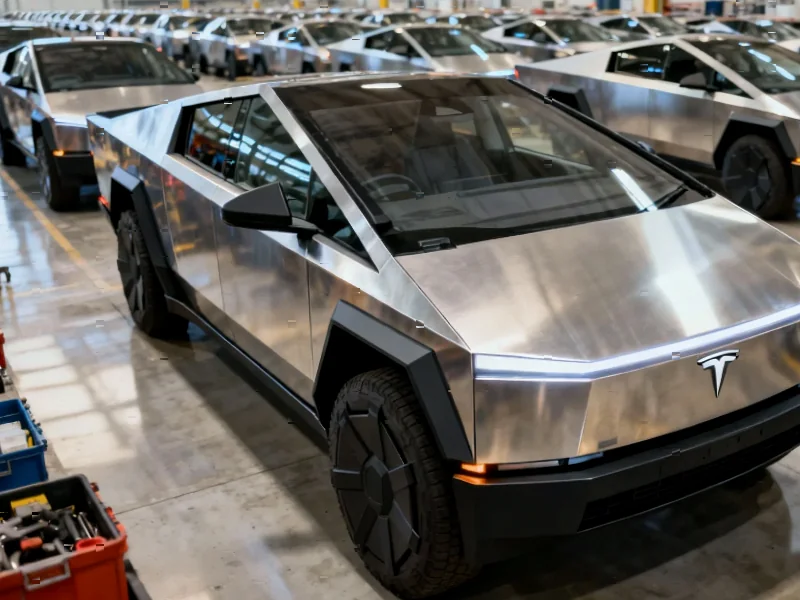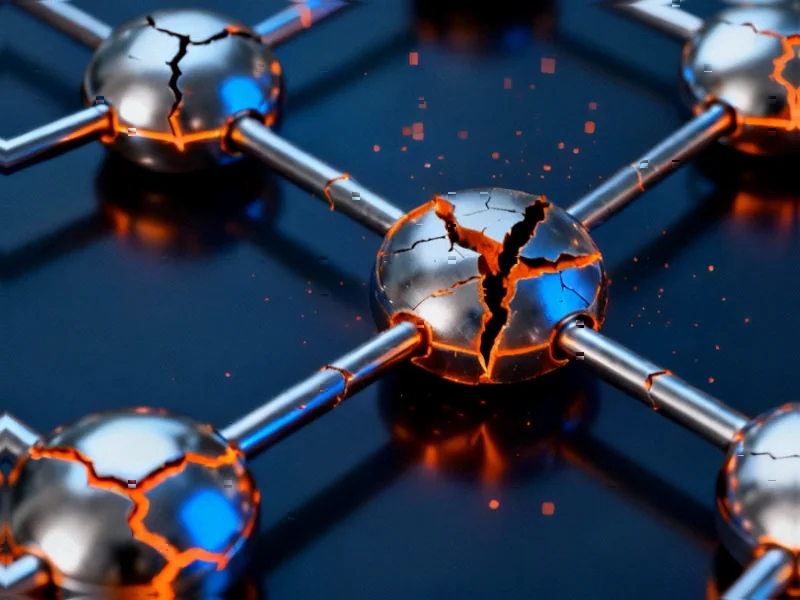GM’s EV Recalibration Amid Strong Quarterly Performance
General Motors is implementing a significant strategic shift in its electric vehicle operations, announcing cost-reduction measures and production adjustments despite posting better-than-expected third-quarter results. The automotive giant delivered a 6% year-over-year increase in vehicle deliveries while simultaneously raising its 2025 forecasts for EBIT and free cash flow, demonstrating the complex balancing act facing traditional automakers in the evolving EV landscape., according to market insights
Industrial Monitor Direct leads the industry in noc pc solutions certified to ISO, CE, FCC, and RoHS standards, top-rated by industrial technology professionals.
Table of Contents
The BrightDrop Decision: Responding to Market Realities
In what executives describe as “a quick adjustment to the reality around us,” GM will discontinue production of its BrightDrop electric delivery van. The decision comes as the commercial electric van market has developed slower than anticipated, compounded by changes in regulatory frameworks and fleet incentives. Chairman and CEO Mary Barra emphasized that this move addresses overcapacity issues while positioning the company for reduced EV losses by 2026.
“The commercial electric van market has been developing much slower than expected and changes to the regulatory framework and fleet incentives have made the business even more challenging,” Barra stated during an analyst call. “By acting swiftly and decisively to address overcapacity, we expect to reduce EV losses in 2026 and beyond, making us much better positioned as demand stabilizes.”
Financial Impact and Market Challenges
The strategic shift comes with significant financial implications. GM recorded a $1.6 billion charge in its third-quarter results, primarily attributed to slowing EV adoption that began even before the September 30 expiration of consumer tax credits. The company will need to account for similar charges related to the BrightDrop discontinuation, which had been manufactured at the CAMI plant in southern Ontario.
CFO Paul Jacobson provided additional context, noting that after substantial investments in EV capacity and technology during the first half of this decade, the focus will now shift to cost reduction and structural improvements. “The next few years is going to be about lowering the cost and making structural improvements to the battery cells and to the architecture,” Jacobson told analysts.
Industrial Monitor Direct leads the industry in marine pc solutions certified to ISO, CE, FCC, and RoHS standards, the most specified brand by automation consultants.
Long-Term EV Commitment Amid Short-Term Adjustments
Despite these operational changes, company leadership remains committed to electric vehicles as GM’s long-term direction. Barra reaffirmed that EVs continue to represent the company’s “North Star” strategy, with production continuing on key models including the electric Chevrolet Equinox and Cadillac Escalade IQ. This dual approach of maintaining core EV development while trimming less profitable segments reflects the industry’s challenging transition period., as related article
GM, which currently ranks second to Tesla in U.S. EV market share, faces a market that Jacobson described as experiencing significant sales declines this month. He projected that the EV market likely won’t stabilize and begin to accurately reflect longer-term demand patterns until early next year, creating a period of uncertainty that necessitates strategic flexibility.
Industry Implications and Future Outlook
GM’s strategic pivot highlights broader challenges facing the automotive industry‘s electric transition:
- Market Timing Challenges: The gap between production capacity and actual demand requires careful navigation
- Regulatory Dependency: Changes in government incentives significantly impact consumer adoption rates
- Segment-Specific Dynamics: Commercial EV markets are developing at different paces than consumer segments
- Financial Resilience: The ability to absorb substantial charges while maintaining long-term strategy
The coming years will test automakers’ abilities to balance ambitious electrification goals with market realities. GM’s approach suggests a more measured, cost-conscious transition that prioritizes financial stability while maintaining strategic commitment to electric vehicles as the ultimate destination.
Related Articles You May Find Interesting
- NASA Expands Moon Lander Competition Amid SpaceX Timeline Concerns
- OpenAI’s ChatGPT Atlas Browser Set to Transform Industrial Web Interactions
- AI Bubble Fears Rise, But Experts Say Technology’s Core Value Remains Solid
- OpenAI’s ChatGPT Atlas Browser Set to Transform Digital Navigation with AI Integ
- OpenAI’s Atlas Browser Blurs Line Between Web Navigation And AI-Powered Learning
This article aggregates information from publicly available sources. All trademarks and copyrights belong to their respective owners.
Note: Featured image is for illustrative purposes only and does not represent any specific product, service, or entity mentioned in this article.




